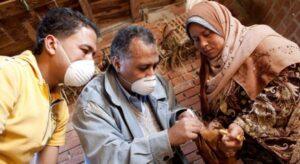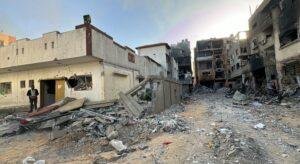The earthquake of March 28 measuring 7.7 on the Richter scale, struck the central regions with a deadly force, killing some 3,800 people and injuring more than 5,000, according to the UN estimates.
The disaster has devastated the infrastructure and houses of Mandalay, Sagaing and Magway, moving tens of thousands of others in a country already struggling with more than 3.2 million people displaced internally (PDI) since the military coup of 2021.
“”Communities are still in shock from earthquakes – the strongest in the country has known in a century,“Said Jorge Moreira Da Silva, Executive Director of the United Nations Bureau for Project Services (UNOPS), addressing journalists from the United Nations headquarters in New York by Beijing video after a three -day visit to Myanmar.
“”The devastation caused by earthquakes has aggravated the existing challenges of the conflict, displacement and serious humanitarian needs.“”
Need exceeding resources
UNOPS, which maintains the largest United Nations presence in Myanmar with nearly 500 employees, mobilized $ 25 million in the weeks following the disaster and reached half a million people with rescue support.
“My colleagues worked quickly with partners to deliver emergency shelters, clean water and deploy infrastructure specialists for quick assessments,” Da Silva said.
However, he warned that much greater international support is necessary to meet the extent of needs.
The World Bank estimates the total damages at almost $ 11 billion, the complete reconstruction should cost two to three times more. Over 2.5 million tonnes of debris must also be authorized to allow recovery.
Mr. Da Silva stressed that reconstruction must be centered on people, inclusive and linked to peacebuilding efforts.
“We echo the UN calls for the end of violence,” he said. “”Recovery and reconstruction should support the trip from Myanmar to peace and reconciliation. Civilians must be a priority.“”
Women and girls face disproportionate risks
Humanitarian repercussions have struck women and girls particularly hard – many of whom were one of people killed or injured – and are now facing increasing risk of protection.
According to the United Nations Reproductive Health Agency, UNFPA, more than 4.6 million women of childbearing age – more than 220,000 speakers – are at increased risks.
Damage to health establishments, aggravated by the floods and insecurity of the monsoon, disrupted access to emergency obstetric care and menstrual hygiene. Gender -based violence increases sharply in overcrowded and poorly enlightened shelters.
The Executive Director of UNOPS, Jorge Moreira Da Silva, meets a woman and her newborn in a health clinic.
Pressure health system
THE Risk of water diseases Like cholera and vector diseases such as dengue and malaria also increase.
According to the World Health Organization (WHO), while no major epidemic had been reported on May 31, cases of acute aqueous diarrhea and skin infections are launching.
The monsoon rains have aggravated the conditions in temporary shelters, where overcrowding and poor sanitation raise serious health problems. Mental health remains fragile, 67% of respondents in a recent survey reporting emotional distress linked to the earthquake and the current conflict.
WHO and its partners have delivered more than 300,000 doses of vaccines – including tetanus and rage – but access remains limited and underfunced health services.
Prolonged crisis
More than 3.25 million people have been moved to Myanmar since the military coup of February 2021, with at least 176,000 others looking for refuge in neighboring countries, according to the refugee agency, UNHCR.
This excludes hundreds of thousands of Rohingyas refugees from previous waves of violence.
Myanmar also remains one of the deadliest countries in the world for terrestrial mines and the explosive remains of war.
During the first nine months of 2024 only, 889 victims were reported – arousing fears that the toll could exceed the record of 1,052 deaths and injuries documented in 2023.




